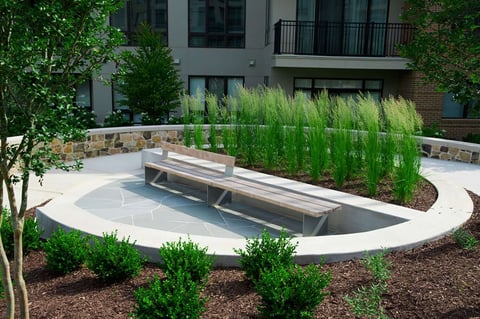

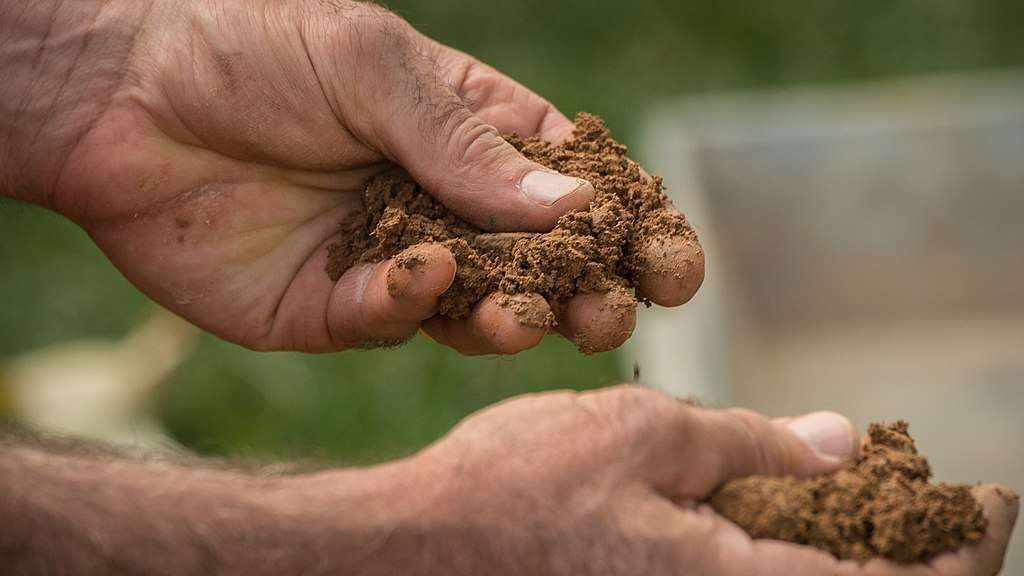
If you’re a stressed-out property manager juggling a couple dozen tasks, is soil compaction on your list? Probably not.
You should add it. The appeal of your commercial property depends on it.
Why is soil compaction bad?
We’ll make this pretty quick. And at the end, you’ll discover how a robot can help.
It’s actually just like it sounds. When your soil is compacted, the particles of soil are pressed tightly together. Instead of loose and fluffy, your soil is hard and dense.
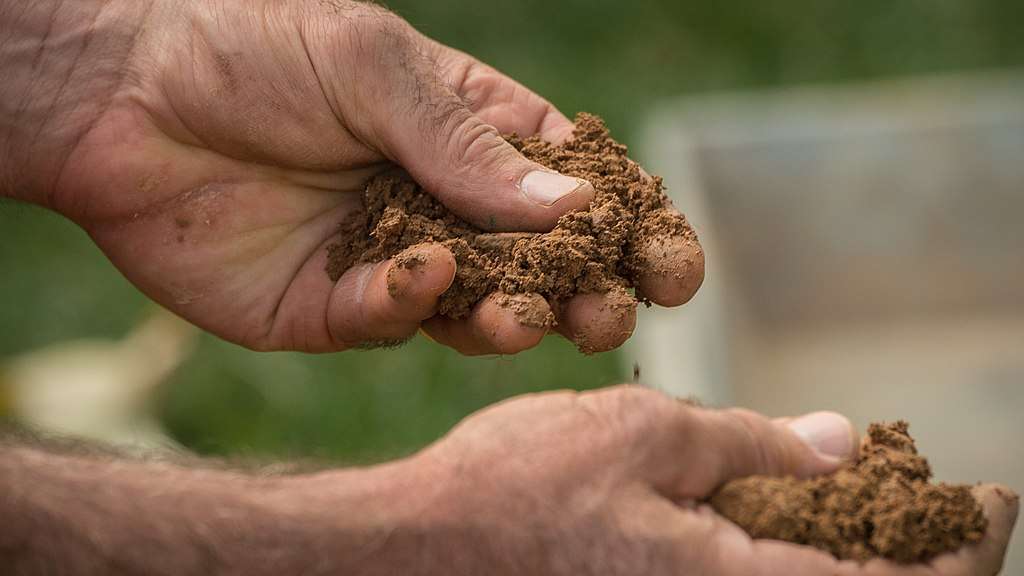
Some soil is naturally more compacted, like clay. Around here, northern areas tend to have more clay, eastern areas more sandy soil.
But compaction can happen to all types of soil
Weight, for one thing. Those big mowers that travel your property week after week are really heavy. As they mow, they press down and compact the soil.
It’s even more of a problem if the mowers take the same path week after week.
(Level Green crews vary the direction of their mowing, changing the pattern to help reduce soil compaction.)
Heavy foot traffic can cause soil compaction, too.
Imagine if your body couldn’t absorb food, water, or air. Bad news, right?
When your soil is packed hard and dense, important water, air, and nutrients can’t easily penetrate it. Your grass struggles to survive. It gets weak, thin, patchy, and brown.
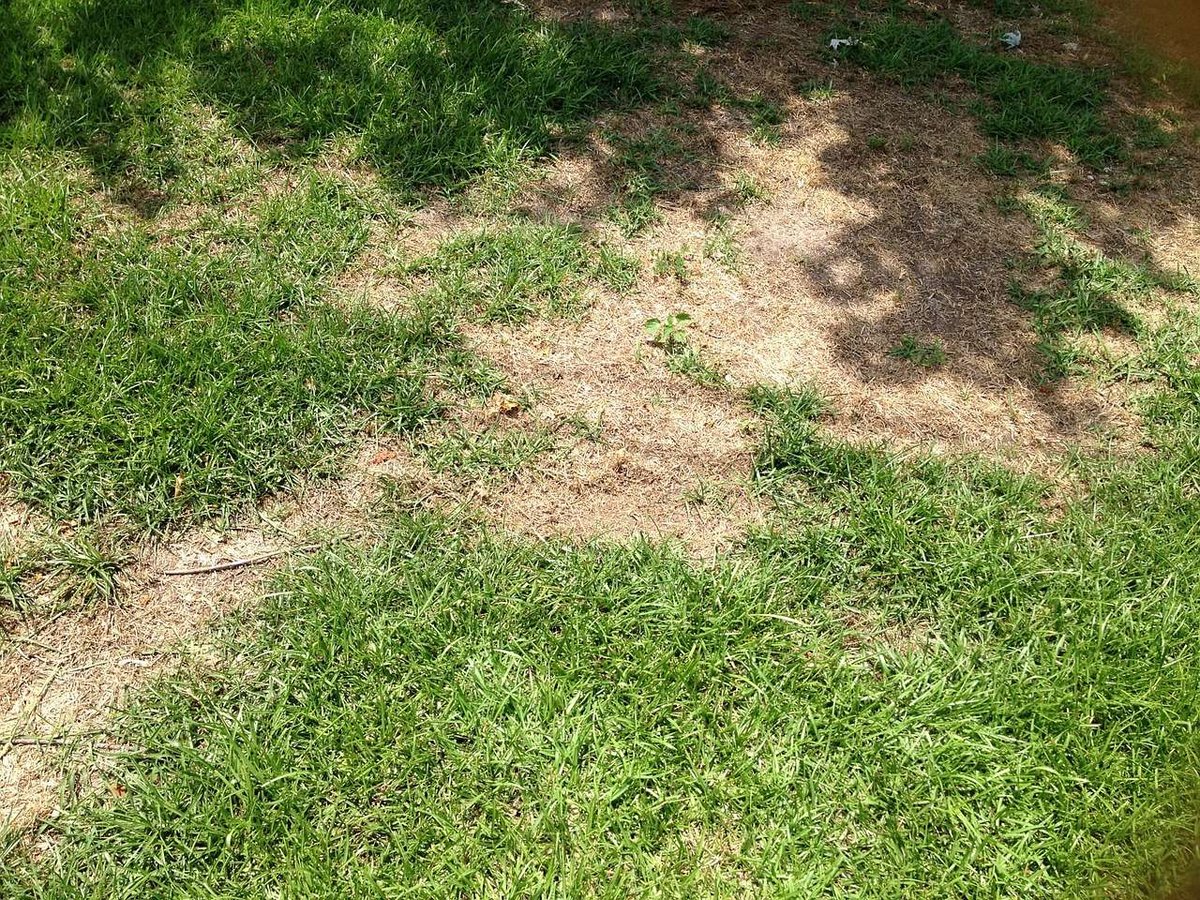
It’s no longer the healthy, attractive lawn you need for your commercial property’s appeal.
So, compaction makes your lawn look terrible.
Beyond that, it causes drainage issues on your property. When your soil is dense and compacted, water can’t absorb properly, which means it sits on top forming puddles.
Or it runs off the surface, which can lead to flooding, erosion, and the transfer of potential pollutants like pesticides to surrounding waterways.
Your best bet is healthy turf. That means a good year-round turf program that feeds your lawn the nutrients it needs and controls weeds.
Weeds can easily take hold in compacted soil. That’s bad news for your turf. Weeds crowd out grass and shade it from the sunlight it needs.
Aeration to the rescue.
Aeration uses a machine to pull out tiny cores of soil from your lawn, loosening compacted soil and allowing water and oxygen to get to the roots. Now, your lawn’s roots can grow nice and deep, producing a lush, healthy carpet of green.
If you have high-traffic areas — and many commercial properties do — they can especially benefit from aeration, since they‘re more prone to soil compaction.
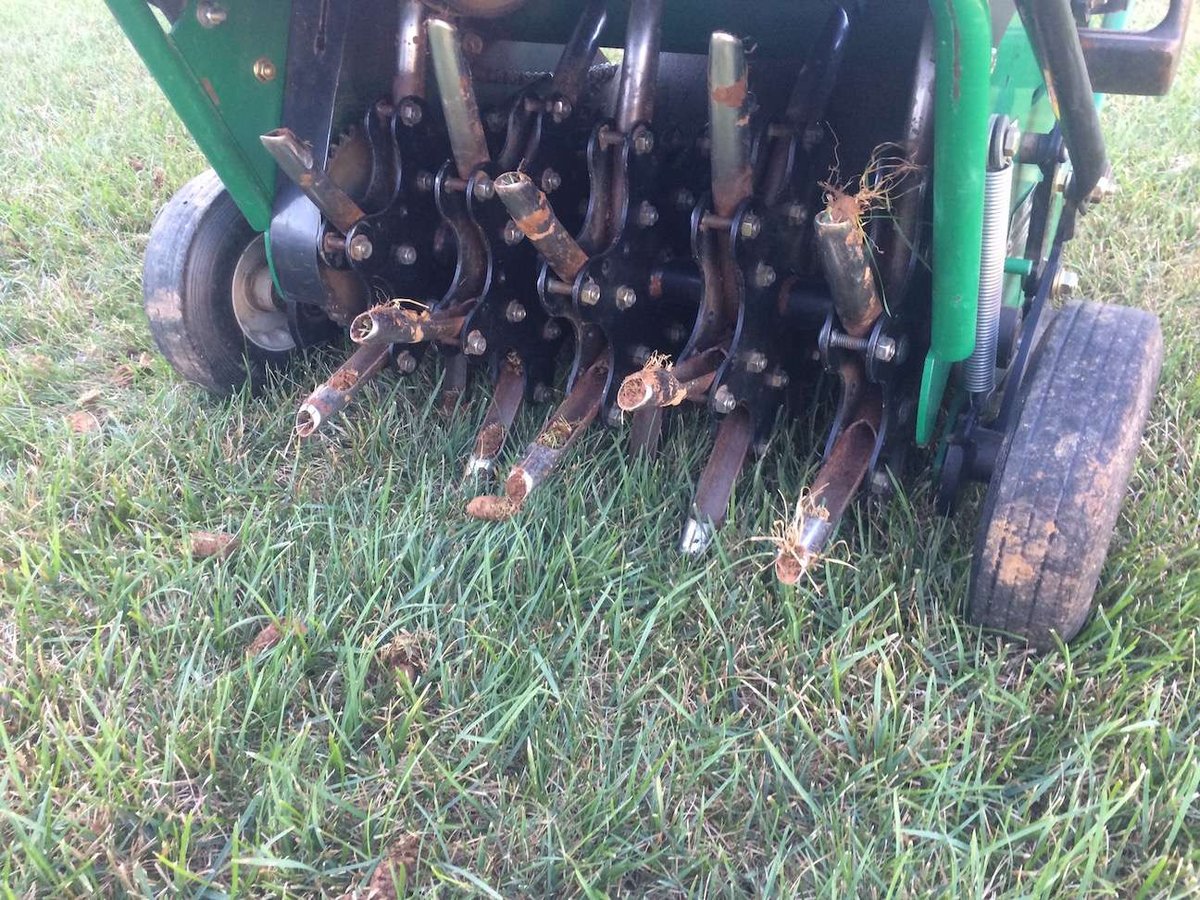
Deep tine aeration is another option. Longer tines go deeper into the soil to break up compaction.
Regular aeration also reduces buildup of thatch, a layer of grass clippings, dead roots, and leaves that builds up on top of the soil.
A bit of thatch is good, providing a cushion and some protection for turf roots.
But heavier thatch buildup keeps water and nutrients from reaching your lawn’s roots, and your turf can’t get what it needs to thrive.
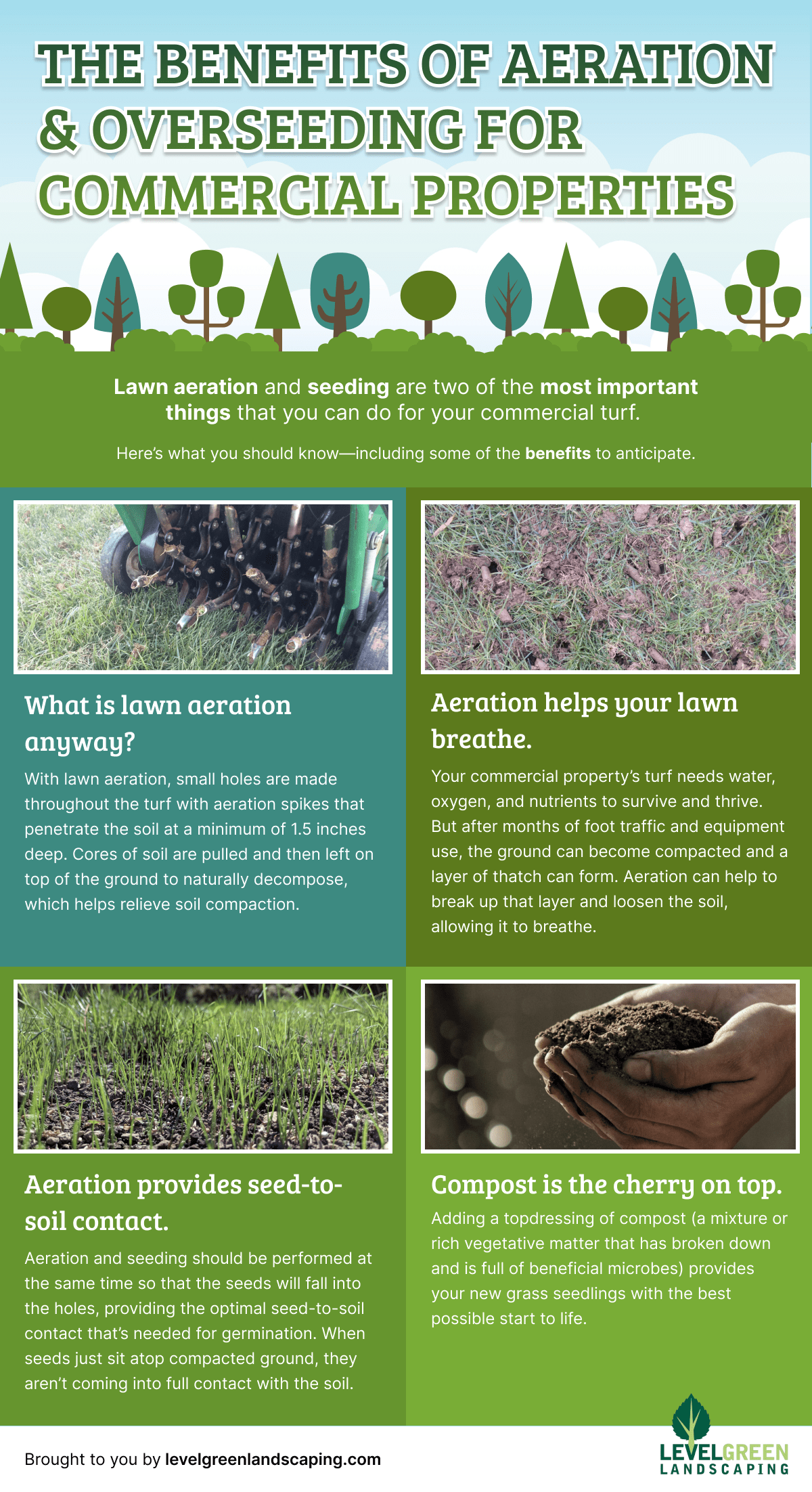
That’s right. Robotic lawn mowers are a great tool to help reduce soil compaction.
Remember that those heavy mowers traveling your property every week compress your soil. They weigh about 1,000 pounds.
A robotic mower weighs less than 10 pounds, zipping around your property without compacting the soil.
These efficient robot mowers stay on your property, mowing every day, but cutting just a tiny amount of grass at a time. That’s better for your grass.
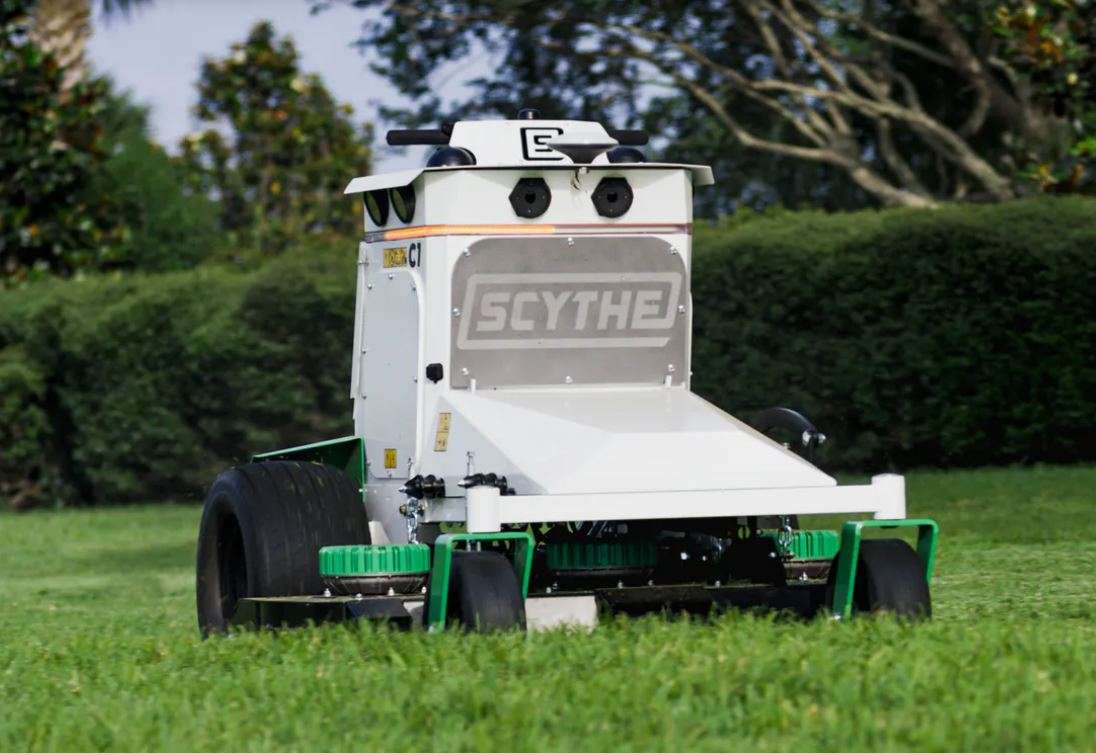
When turf gets just a bit of grass cut off each day it can spend more of its energy growing healthy roots.
Robot mowers also automatically mow in random patterns, which is better for soil and grass. They have sensors on board, combined with algorithms that ensure they know which areas have been mowed and which haven’t.
If you head outside now to stare at your lawn looking for compacted soil, you won’t see it. Even if you squint. The problem is underground.
But if your lawn is struggling, even with regular fertilizing, compacted soil might be preventing your turf’s roots from getting the water, air, and nutrients it needs.
How to solve soil compaction? Let us take a look. We’ll get you set up with the proper turf program, aeration plan, and even cool robot mowers to get your stubborn compacted soil light and fluffy again.
If you’re not already a Level Green Landscaping client, we’d love to add you to our growing list of happy customers. Our focus is on commercial properties like offices, mixed-use sites, HOAs, municipalities, and institutions in Maryland, Washington DC, and parts of Virginia.
Contact us at 202-544-0968. You can also request a free consultation online to meet with us one-on-one.
We’d love to hear from you.
Image Source: soil in hands







Doug Delano (and Bill Hardy) opened Level Green Landscaping LLC in 2002 to offer Washington DC, Maryland and Virginia reliable commercial landscape maintenance services.